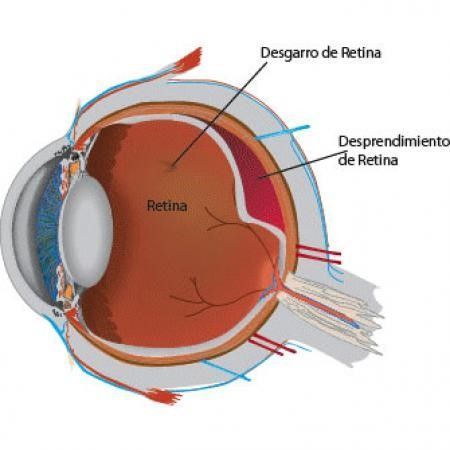Retinal detachment is the physical separation between the pigmentary epithelium and the neurosensory retina, accumulating fluid between these layers. It’s a full-fledged eye emergency. It has a surgical treatment, an early surgery can change a lot, the visual prognosis. Hence the importance in which you know the signs and symptoms associated with it, to go as soon as possible to the ophthalmologist.
The retina is one of the most important tissues of the eye, its cells are responsible for collecting visual information, and transmit it to the brain through the optic nerve. it is the most important zone, the macula or area located in the central 30 degrees, and the cells are neuronal tissue not autoregenerative. There are the cells responsible for the detail vision, they are the “cones” or photoreceptors of the visual axis.
The retinal cells need the blood supply of the choroid or outer layer to the retina. When the retina detaches, it runs out of flow, producing greater cell damage if it has been a long time since diagnosis. It is important that the surgery be soon. If it is not done, it can cause irreversible loss of vision, even if the surgery is anatomically successful.
The most frequent retinal detachment is the so-called “Regmatogen”, in which there is a previous retinal rupture. There are warning signs that patient can identify on many occasions, and that can put him on the trail that something strange is happening.
The most frequent symptoms are: the appearance or increase of flying flies or «Miodesopsias», the sensation of vision of flashes; and as a fixed shade or shadow that increases with the days.
It usually appears in adulthood, patients with high myopia or high myopia having a special predisposition.
Many of retinal detachments can be prevented with a correct exploration of the peripheral retina. On many occasions we observe the so-called “pre-regmatogenous degenerations”, thinner areas of the retina, which are more likely to break. there are many cases in which a preventive treatment with laser is performed, in such a way that they are reinforced, avoiding their removal and subsequent surgery.
Vitrectomy is the most widespread surgical treatment,achieving a succes rate of more than 85%.When the surgery has been done in time and the macula or central area of the eye is not detached, the previous vision is recoverable. If the surgery is a distant date, the retina becomes stiffer and more difficult to apply to its initial position, occurring in many cases, even if the eye is seen to be cured with the retina reapplied,the vision is lost objectively.


Recent Comments